#wasps of western ghats
Text
Glittering Cuckoo Wasp (Chrysididae).
youtube
#cuckoo wasp#cuckoo#wasp#wasps#chrysididae#emerald wasp#glittering#metallic#insect#insects#entomology#insects of western ghats#insects of india#wasps of western ghats#wasps of india#maharashtra#hymenoptera#Youtube
3 notes
·
View notes
Text
Researchers discover new species of wasp-like flower flies | Thiruvananthapuram News
Thiruvananthapuram: A three member team of researchers from India and Germany, including a city based researcher has collaborated to discover two new species of very rare wasp like flower flies from North Eastern India and the Western Ghats. The newly described species ´Monoceromyia flavoscutata´ and ´M. nigra´ belongs family Syrphidae. The findings have been published in the Journal of…

View On WordPress
0 notes
Text
Two new species of cockroach wasps found
Two new species of cockroach wasps found
Kozhikode
In a significant development, researchers at the Zoological Survey of India (ZSI), Kozhikode have discovered two new species of cockroach wasps in the Western Ghats.
These wasps species were discovered from Coonoor in Tamil Nadu and Peppara Wild Life Sanctuary in Kerala. They belonged to the family Ampulicidae and hunted cockroaches to feed their larvae, thereby helping to control the…
View On WordPress
0 notes
Text
New Wasp Species Discovered In Western Ghats
(adsbygoogle = window.adsbygoogle || []).push({});
Scientists have discovered a new species of wasp in the forests of the Western Ghats. It was identified by a team of scientists consisting of P Girish Kumar and P M Sureshan of the Western Ghats Regional Centre(WGRC) of the Zoological Survey of India(ZSI) and and James M. Carpenter of the American Museum of Natural History, New York.
Image via Zeenews
According to Muhamed Jafer Palot of the Western Ghats Regional Centre (WGRC) of the Zoological Survey of India (ZSI) , Kozhikode, the species belongs to the sub-family of Eumeninae of the family Vespidae. These wasps are only about 6 mm in length. They are harmless and make mud nests.
(adsbygoogle = window.adsbygoogle || []).push({});
This species of wasps was seen in a wide range of places in the Western Ghats such as the Malabar Wildlife Sanctuary, Aralam Wildlife Sanctuary, Nilambur forests, and also from Muthappanpuzha of Kozhikode district.
Read More: A Kingfisher Turns Into A Frog In The Western Ghats
With this discovery, the total number of species of genus ‘Parancistrocerus’ stands at three in Kerala and 11 in India. The details of the new species discovered has been published in the latest issue of the journal ‘Halteres’.
New Wasp Species Discovered In Western Ghats was originally published on India's Endangered
0 notes
Text

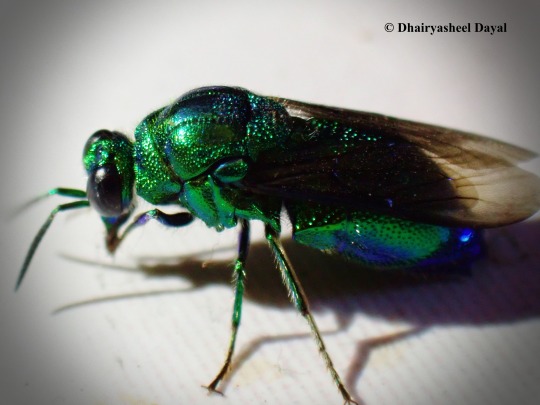

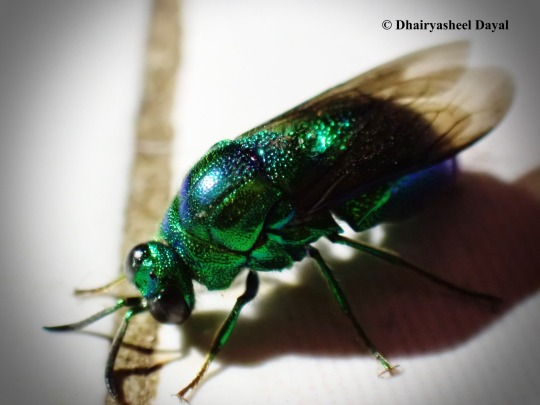
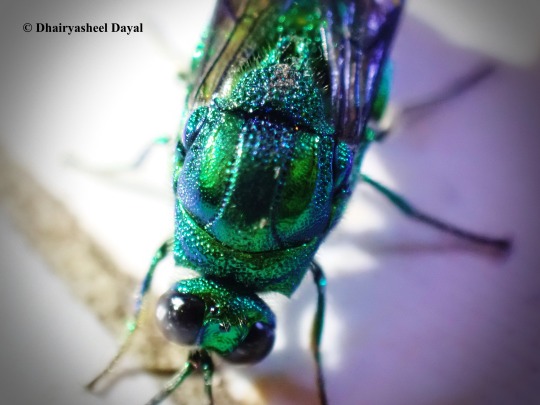
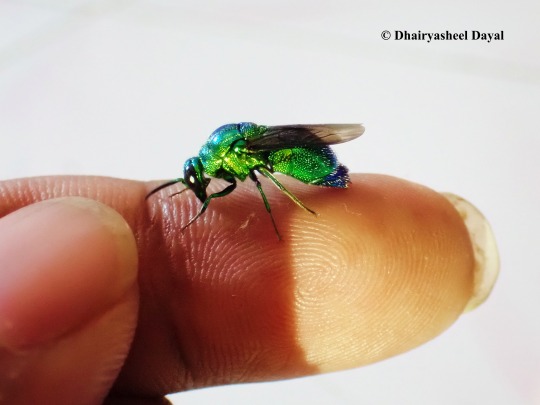
Chrysididae; Cuckoo Wasp.
#chrysididae#cuckoo wasp#wasps#insect#insects#hymenoptera#arthropods#wasps of india#wasps of western ghats#insects of india#insects of western ghats#biodiversity of western ghats#photography#metallic#metallic colours#colours#sparkling#glittering#insect photography
3 notes
·
View notes
Text
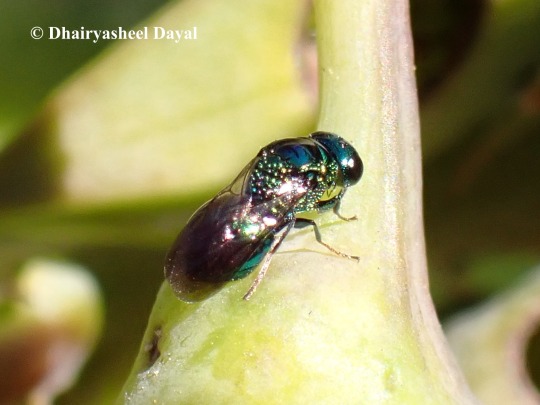
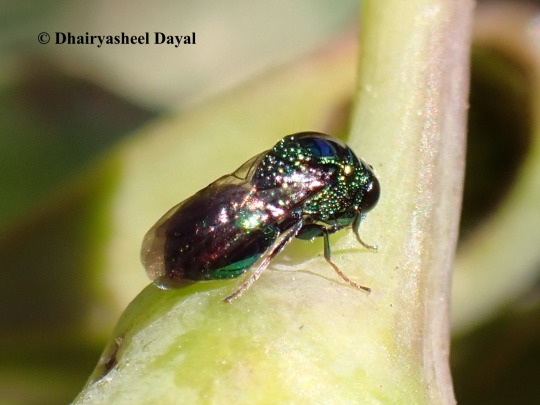
Chrysididae, Cuckoo Wasp.
#chrysididae#cuckoo wasp#cuckoo#wasp#wasps#insect#insects#insects of western ghats#insects of india#biodiversity of western ghats#hymenoptera#emerald#metallic#colours#metallic colours#sparkling#shining#wasps of western ghats#wasps of india#maharashtra
1 note
·
View note
Text
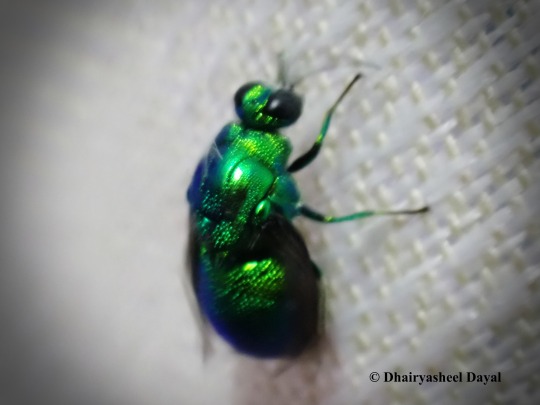
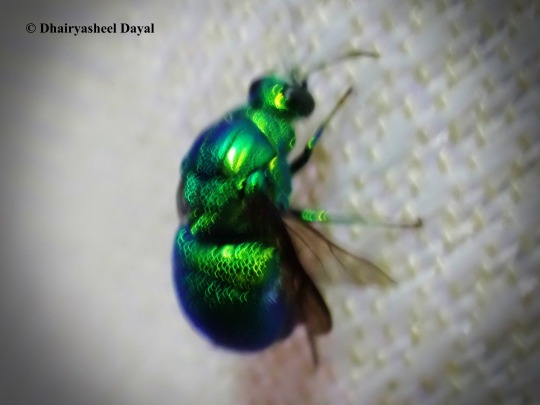
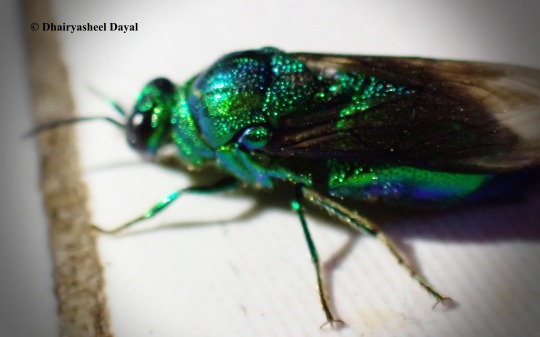
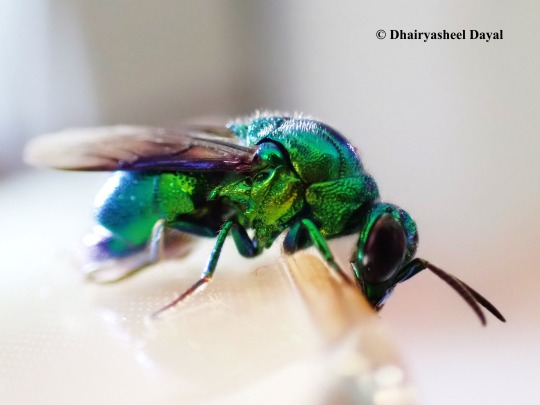
Chrysididae; Cuckoo Wasp.
#chrysididae#cuckoo wasp#wasps#insect#insects#hymenoptera#arthropods#wasps of india#wasps of western ghats#insects of india#insects of western ghats#biodiversity of western ghats#photography#metallic#metallic colours#color#colours#colourful#shiny#glittering#sparkling#emerald wasp#emerald#insect photography
1 note
·
View note
Text
Wild Cats And Wild Dogs Of India Choose To Co-Exist Rather Than Compete
(adsbygoogle = window.adsbygoogle || []).push({});
A new study in India by Wildlife Conservation Soceity (WCS) shows that three carnivores – tigers, leopards, and dholes (Asian wild dog) – seemingly in direct competition with one other, are living side by side with surprisingly little conflict.
A mother leopard suprised to see us while it tried to hunt a Bonnet Macaque said the researchers. Image via WCS
Usually, big cats and wild canids live in different locations to avoid each other.
Read More: New Wasp Species Discovered In Western Ghats
Yet in four relatively small reserves in India’s wildlife-rich Western Ghats region, WCS researchers have found that they are co-existing, despite competing for much of the same prey, including sambar deer, chital, and pigs.
Using dozens of non-invasive camera traps for sampling entire populations, rather than track a handful of individuals, the research team recorded some 2,500 images of the three predators in action.
The authors found that in reserves with an abundance of prey, dholes, which are active during the day, did not come in much contact with the more nocturnal tigers and leopards. But in Bhadra Reserve where prey was scarcer, their active times overlapped, yet dholes still managed to avoid the big cats. In Nagarahole, a park teeming with all three carnivores and their prey, leopards actively to avoid tigers.
Overall, the authors say that these carnivores have developed smart adaptations to coexist, even while they exploit the same prey base. However, these mechanisms vary depending on density of prey resources and possibly other habitat features.
(adsbygoogle = window.adsbygoogle || []).push({});
Read More: Leopard Cub Rescued In Karnataka
Said Ullas Karanth, WCS Director for Science in Asia and lead author of the study: “Tigers, leopards, and dholes are doing a delicate dance in these protected areas, and all are managing to survive. We were surprised to see how each species has remarkably different adaptations to prey on different prey sizes, use different habitat types and be active at different times. Because of small and isolated nature of these high prey densities in these reserves, such adaptions are helpful for conservationists trying to save all three.”
Both tigers and dholes are classified as Endangered by IUCN; leopards are considered Vulnerable.
Understanding these separate yet overlapping species’ needs is critical to managing predators and prey in small reserves, which is increasingly the scenario of the future. The authors say that by managing populations of flagship predators, like tigers, carefully overall biodiversity can also be conserved.
The study titled “Spatio-temporal interactions facilitate large carnivore sympatry across a resource gradient” authored by Dr. Ullas Karanth, Mr. Arjun Srivathsa, Dr. Divya Vasudev, Ms. Mahi Puri, Dr. Ravishankar Parameshwaran and Dr. Samba Kumar, appeared in the journal Proceedings of the Royal Society of London B: Biological Sciences in February 2017.
This research was supported by the Department of Biotechnology and Department of Science and Technology, Government of India; The Forest Department and Department of Science and Technology, Government of Karnataka; and the Liz Claiborne and Art Ortenberg Foundation.
Read More: Rare Asiatic Wild Dog Spotted In Bengal For The First Time
Source
(adsbygoogle = window.adsbygoogle || []).push({});
Wild Cats And Wild Dogs Of India Choose To Co-Exist Rather Than Compete was originally published on India's Endangered
0 notes